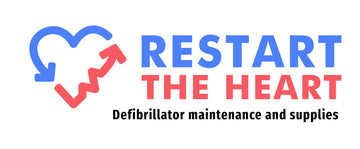Everything You Need to Know About Defibrillators
The heart is crucial to human life. Although the brain controls and coordinates your body movements, enables you to think, feel, and perform various things that make you human, it can’t pump blood around your body. As the centre of your circulatory system, the heart serves as your body’s engine, keeping it freshly supplied with oxygen and nutrients.
Given the grave importance of the heart, every individual must take care of it well to function properly for as long as it should. No one would have heart problems in an ideal world, but this isn’t the case in reality.
The Country’s Heart Health Crisis
Unfortunately, cardiovascular conditions are pretty common in Australia, with over one million people living with heart disease, stroke, or vascular disorders. With 18,590 deaths attributed to heart disease in Australia in 2017, it seems that heart disease is one of the leading causes of death in the country.
Each year, about 25,000 people have a cardiac arrest, with only five per cent of them surviving and continuing living their lives. Five per cent sound like a small amount compared to the number of people who’ve died from cardiac arrest and heart disease, but it doesn’t change the fact that lives have been saved.
Although it’s crucial to deal with the health crisis in Australia, we must also acknowledge the advancement in cardiac devices that have helped save the lives of those who have suffered from sudden cardiac arrest, namely the defibrillator.
The Role of the Defibrillator
The defibrillator is one of the most critical tools in saving the life of someone suffering from sudden cardiac arrest. Also known as an AED (automated external defibrillator), this small, lightweight, portable device analyses the heart rhythm, recognises irregular heart rhythms, and delivers an electric shock through the chest wall.
Combined with the application of CPR, a defibrillator is the only treatment for someone who has suffered a cardiac arrest. The device will provide shock treatment to the heart only if the organ is in a state of uncontrollable quivering. If used within three to five minutes of a person collapsing, their chances of survival increase from 6% to 74%!
How to Use a Defibrillator
Contrary to what some may believe, a defibrillator is pretty simple to use, as they’re designed to be used by any first responder. Regardless of your age, training, or experience, you can use a defibrillator and save someone’s life.
As soon as you turn on the defibrillator, it will guide you through the process through voice prompts. The steps in using a defibrillator typically include:
- Calling 000;
- Exposing the chest;
- Attaching cables to electrode pads;
- Making sure the chest is dry;
- Peeling away the protective plastic and attaching the electrode pads;
- Positioning a pad on the upper anterior side of the chest;
- Placing the second pad on the lower anterior chest wall;
- Standing back and ensuring no one is touching the individual;
- Pressing the ANALYSE button on the defibrillator; and
- Push the flashing shock button if a shock is required.
Once the shock has been delivered, the defibrillator will tell you whether you need to continue CPR. Make sure to keep doing chest compressions and rescue breaths until the patient shows signs of life or the defibrillator tells you to stop.
Conclusion
Anyone is susceptible to heart arrest, including you. Only a small percentage of people survive sudden cardiac arrest without a defibrillator, it’s important to know how to use it. Learning about the defibrillator may not seem necessary now, but you never know when you’ll be offered a chance to save someone’s life!
Are you looking for defibrillators and supplies? We at Restart the Heart may have just what you need! As one of Australia’s most trusted defibrillator suppliers, we have an extensive array of cardiac devices, AED pads, and batteries for all brands. Browse our products today!

